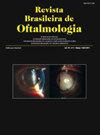求助PDF
{"title":"巴西微创青光眼手术的现状","authors":"M. R. Luiz, F. Kanadani","doi":"10.37039/1982.8551.20220001","DOIUrl":null,"url":null,"abstract":"Copyright ©2021 Glaucoma is the leading cause of irreversible blindness in the world, affecting approximately 60 million people;(1) and the estimates for 2040 are over 110 million individuals.(2) The surgical treatment scenario of glaucoma has undergone major changes in recent decades with the introduction of selective laser trabeculoplasty (SLT), less aggressive cyclodestructive procedures and minimally invasive glaucoma surgery (MIGS). Minimally invasive glaucoma surgery has a better safety profile, providing faster recovery and lower incidence of severe complications, which are often associated with filtering surgeries, such as hypotonia, blebitis and choroidal detachment.(3) On the other hand, it is costly and less effective reducing intraocular pressure (IOP). MIGS is indicated for patients with mild or moderate glaucoma, stable, with indication for cataract surgery phacoemulsification (phaco).(4) In specific cases, it could also be performed alone (stand-alone) in phakic or pseudophakic eyes. The four main approaches to reducing IOP by MIGS include increasing trabecular outflow through the juxtacanalicular meshwork bypass, increasing uveoscleral outflow through suprachoroidal pathways, reducing aqueous production from the ciliary body, or creating a subconjunctival drainage pathway.(5) Currently, in Brazil, the following types of MIGS are available, acting to increase trabecular outflow: gonioscopy-assisted transluminal trabeculotomy (GATT),(6) Kahook Dual Blade® (KDB),(7) and the iStent® G1 and iStent inject®,(8) reinforcing the indication in cases of primary open-angle glaucoma (POAG).(9,10) There are descriptions in the literature of GATT in cases of steroid-induced,(11) congenital and juvenile glaucoma,(12) and of KDB in cases of infantile,(13) uveitic(14) glaucoma, and even in appositional angle-closure glaucoma, when the angle opens after the lens extraction.(15)","PeriodicalId":49619,"journal":{"name":"Revista Brasileira De Oftalmologia","volume":"1 1","pages":""},"PeriodicalIF":0.0000,"publicationDate":"2022-01-01","publicationTypes":"Journal Article","fieldsOfStudy":null,"isOpenAccess":false,"openAccessPdf":"","citationCount":"0","resultStr":"{\"title\":\"Current situation of minimally invasive glaucoma surgery in Brazil\",\"authors\":\"M. R. Luiz, F. Kanadani\",\"doi\":\"10.37039/1982.8551.20220001\",\"DOIUrl\":null,\"url\":null,\"abstract\":\"Copyright ©2021 Glaucoma is the leading cause of irreversible blindness in the world, affecting approximately 60 million people;(1) and the estimates for 2040 are over 110 million individuals.(2) The surgical treatment scenario of glaucoma has undergone major changes in recent decades with the introduction of selective laser trabeculoplasty (SLT), less aggressive cyclodestructive procedures and minimally invasive glaucoma surgery (MIGS). Minimally invasive glaucoma surgery has a better safety profile, providing faster recovery and lower incidence of severe complications, which are often associated with filtering surgeries, such as hypotonia, blebitis and choroidal detachment.(3) On the other hand, it is costly and less effective reducing intraocular pressure (IOP). MIGS is indicated for patients with mild or moderate glaucoma, stable, with indication for cataract surgery phacoemulsification (phaco).(4) In specific cases, it could also be performed alone (stand-alone) in phakic or pseudophakic eyes. The four main approaches to reducing IOP by MIGS include increasing trabecular outflow through the juxtacanalicular meshwork bypass, increasing uveoscleral outflow through suprachoroidal pathways, reducing aqueous production from the ciliary body, or creating a subconjunctival drainage pathway.(5) Currently, in Brazil, the following types of MIGS are available, acting to increase trabecular outflow: gonioscopy-assisted transluminal trabeculotomy (GATT),(6) Kahook Dual Blade® (KDB),(7) and the iStent® G1 and iStent inject®,(8) reinforcing the indication in cases of primary open-angle glaucoma (POAG).(9,10) There are descriptions in the literature of GATT in cases of steroid-induced,(11) congenital and juvenile glaucoma,(12) and of KDB in cases of infantile,(13) uveitic(14) glaucoma, and even in appositional angle-closure glaucoma, when the angle opens after the lens extraction.(15)\",\"PeriodicalId\":49619,\"journal\":{\"name\":\"Revista Brasileira De Oftalmologia\",\"volume\":\"1 1\",\"pages\":\"\"},\"PeriodicalIF\":0.0000,\"publicationDate\":\"2022-01-01\",\"publicationTypes\":\"Journal Article\",\"fieldsOfStudy\":null,\"isOpenAccess\":false,\"openAccessPdf\":\"\",\"citationCount\":\"0\",\"resultStr\":null,\"platform\":\"Semanticscholar\",\"paperid\":null,\"PeriodicalName\":\"Revista Brasileira De Oftalmologia\",\"FirstCategoryId\":\"1085\",\"ListUrlMain\":\"https://doi.org/10.37039/1982.8551.20220001\",\"RegionNum\":0,\"RegionCategory\":null,\"ArticlePicture\":[],\"TitleCN\":null,\"AbstractTextCN\":null,\"PMCID\":null,\"EPubDate\":\"\",\"PubModel\":\"\",\"JCR\":\"Q4\",\"JCRName\":\"Medicine\",\"Score\":null,\"Total\":0}","platform":"Semanticscholar","paperid":null,"PeriodicalName":"Revista Brasileira De Oftalmologia","FirstCategoryId":"1085","ListUrlMain":"https://doi.org/10.37039/1982.8551.20220001","RegionNum":0,"RegionCategory":null,"ArticlePicture":[],"TitleCN":null,"AbstractTextCN":null,"PMCID":null,"EPubDate":"","PubModel":"","JCR":"Q4","JCRName":"Medicine","Score":null,"Total":0}
引用次数: 0
引用
批量引用
Current situation of minimally invasive glaucoma surgery in Brazil
Copyright ©2021 Glaucoma is the leading cause of irreversible blindness in the world, affecting approximately 60 million people;(1) and the estimates for 2040 are over 110 million individuals.(2) The surgical treatment scenario of glaucoma has undergone major changes in recent decades with the introduction of selective laser trabeculoplasty (SLT), less aggressive cyclodestructive procedures and minimally invasive glaucoma surgery (MIGS). Minimally invasive glaucoma surgery has a better safety profile, providing faster recovery and lower incidence of severe complications, which are often associated with filtering surgeries, such as hypotonia, blebitis and choroidal detachment.(3) On the other hand, it is costly and less effective reducing intraocular pressure (IOP). MIGS is indicated for patients with mild or moderate glaucoma, stable, with indication for cataract surgery phacoemulsification (phaco).(4) In specific cases, it could also be performed alone (stand-alone) in phakic or pseudophakic eyes. The four main approaches to reducing IOP by MIGS include increasing trabecular outflow through the juxtacanalicular meshwork bypass, increasing uveoscleral outflow through suprachoroidal pathways, reducing aqueous production from the ciliary body, or creating a subconjunctival drainage pathway.(5) Currently, in Brazil, the following types of MIGS are available, acting to increase trabecular outflow: gonioscopy-assisted transluminal trabeculotomy (GATT),(6) Kahook Dual Blade® (KDB),(7) and the iStent® G1 and iStent inject®,(8) reinforcing the indication in cases of primary open-angle glaucoma (POAG).(9,10) There are descriptions in the literature of GATT in cases of steroid-induced,(11) congenital and juvenile glaucoma,(12) and of KDB in cases of infantile,(13) uveitic(14) glaucoma, and even in appositional angle-closure glaucoma, when the angle opens after the lens extraction.(15)


